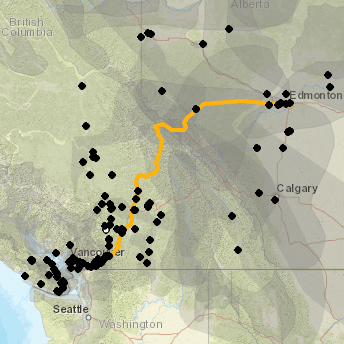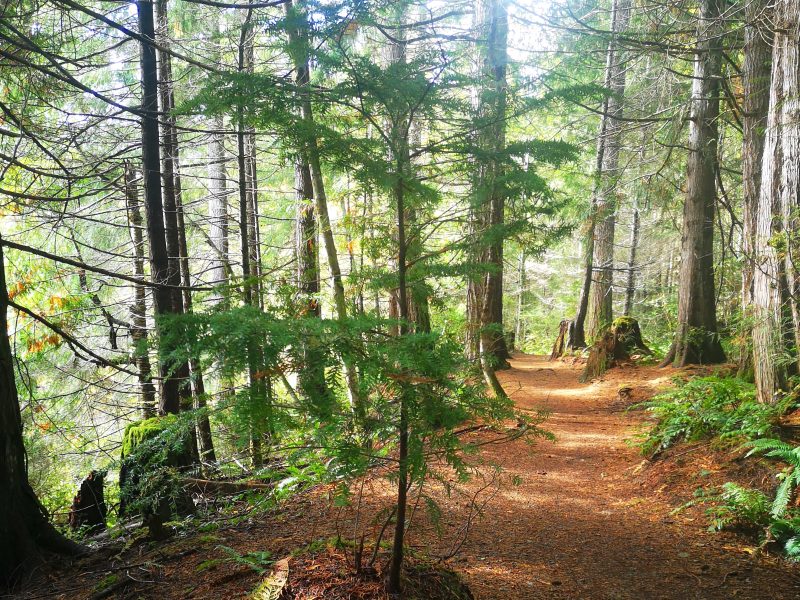
The Discourse is committed to being transparent and accountable. We’re sharing our sources and insights into how we made decisions when analyzing and categorizing our map and database.
Reporters at The Discourse, APTN and HuffPost Canada noticed a gap in nuanced, comprehensive coverage of First Nations and Métis communities and groups consulted by Kinder Morgan for its Trans Mountain pipeline expansion project. We set out to map the locations of each community, the reasons the federal government had to consult the community, the status of consultations and the positions of each community on the project.
We’re conducting phone interviews and poring over media coverage, community websites and hundreds of pages of documents submitted by Kinder Morgan to the National Energy Board and the B.C. Environmental Assessment office in search of up-to-date information on the consultations. It’s a complex process and we know that there’s a range of opinions within communities. If you have information you want to add click here and fill out this survey.
Our Sources:
Traditional Territory
First up, the locations of the traditional territory shown on our map come from Native-Land.ca, an ongoing open-data project that aims to map traditional territory based on a variety of sources and user feedback. Victor Temprano, who launched Native-Land.ca, describes the site as an “opportunity for learning, rather than categorizing.”
Population
To find the population of each First Nation in B.C. and Alberta, we used Indigenous and Northern Affairs Canada’s profiles of First Nations, available here. Information on population is updated periodically. The populations included in our database were last updated in April 2018 and recorded in May.
Community Locations
We primarily used each First Nation’s website to find the locations of band offices and mailing addresses. If we couldn’t find an address on a community’s website, we augmented our data using Indigenous and Northern Affairs Canada’s First Nations profiles and the B.C. Assembly of First Nations’ community profiles.
Project Positions
We searched company and government documents for each community’s position or stance on the proposed pipeline expansion. In quite a few cases, we were unable to verify a position concretely. The information we do know comes primarily from phone interviews with community representatives and the following documents:
- December 2017 Kinder Morgan document entitled, “Reports on Engagement with Aboriginal Groups – Construction for the Trans Mountain Pipeline ULC Trans Mountain Expansion Project NEB Condition 96” (596 pages)
- June 2017 Kinder Morgan document entitled, “Appendix B BC EAO Aboriginal Engagement Report” (164 pages)
- June 2017 Kinder Morgan document entitled, “Aboriginal Consultation Report for the Trans Mountain Pipeline ULC Trans Mountain Expansion Project BC EAO Condition 10” (52 pages)
- June 2017 Kinder Morgan document entitled, “Appendix C National Energy Board Condition 96 Report on Engagement with Aboriginal Groups – Construction” (828 pages)
- The National Energy Board’s “Consolidated Trans Mountain Expansion Project Judicial Reviews,” which lists six communities currently engaged in legal proceedings against Kinder Morgan
- Trans Mountain press releases announcing Mutual Benefits Agreements with Paul First Nation, Simpcw First Nation, and Tk’emlúps te Secwépemc
In some cases, communities signed letters consenting to the project moving forward in their territory.
At the end of this document, you’ll find letters of support from Alexander First Nation, T’Sou-ke First Nation, Simpcw First Nation, Lower Nicola Indian Band, Kwikwetlem First Nation, Cheam Indian Band, and Ts’elxweyeqw Tribe.
Scroll to page 316 in this document and you’ll find letters of support from Ashcroft Indian Band, Ditidaht First Nation, Esquimalt Nation, Halalt First Nation, Hwlitsum First Nation, Lake Cowichan First Nation, Malahat First Nation, Matsqui First Nation, Nicomen Indian Band, Pacheedaht First Nation and Pauquachin Nation.
Finally, this document contains letters of support from Penelakut Tribe, Peters Band, Popkum First Nation, Scia’new Indian Band (Beecher Bay), Seabird Island Band, Semiahmoo First Nation, Shxw’owhamel First Nation, Simpcw First Nation, Tk’emlups te Secwepemc (Kamloops Indian Band), Tsq’escen’ (Canim Lake Band), Whispering Pines/Clinton Band, Union Bar First Nation and Yale First Nation.
Beyond the documents listed above, you can find information on who we’ve interviewed so far and the specific media or community sources that we’re referencing directly in the database.
Can’t find the source or the information you’re looking for? Send us an email! Environment reporter Lauren Kaljur can be reached at lauren@thediscourse.ca.
If you see a gap in our data, or want to share any thoughts, questions or concerns, please let us know by filling out this survey![end]



